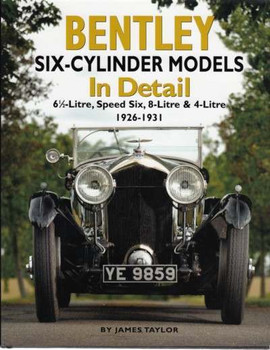Description
By: Nick Walker, new book, minor shelf-wear, small tear on dust jacket
All car enthusiasts know, or think they know, what a vintage Bentley should look like. It should have a Vanden Plas four-seater tourer body, and should be painted green. But Bentleys weren't always like that. When these cars were new, other types of body — saloons, limousines, fixed- head coupes, landaulets, cabriolets, drophead coupes, sedancas de ville — outnumbered the tourers and sports models. Sadly, these were the bodies which were the first to be scrapped, even though their chassis were often saved.
W O Bentley had never intended that his cars should become the luxury playthings of the rich. His first model, the Three Litre, although expensive, was clearly aimed at the sporting motorist.Very quickly, however, it attracted buyers who wanted to body it with heavy saloon and limousine styles, for which it was not well suited. In response, Bentley first increased the wheelbase and then developed more powerful models - the 672 Litre (and its high-performance version, the Speed Six), the 41/2 Litre, and finally the magnificent Eight Litre. British society seized on these cars and clothed them with equally magnificent bespoke bodywork.
This book uses over 200 contemporary blackand-white illustrations and some 60 specially shot colour photographs to tell the story of Bentley coachwork during the 1920s, and up to 1931 when the company went into receivership. Each of the three classes of coachwork — saloons and limousines, drophead coupes, and tourers — is traced as it evolved through that exciting decade. Major developments such as the Weymann system, cellulose paint and streamlining are described in detail. Interspersed are short histories of the major coachbuilding firms involved and light-hearted quotations from the motoring journals of the period.
At a time when every vintage Bentley car which comes on to the market is regarded as no more than another chassis on which to build a Le Mans replica, this book is a timely reminder of the diversity of coachwork which used to grace the products of Britain's most famous car maker.

















